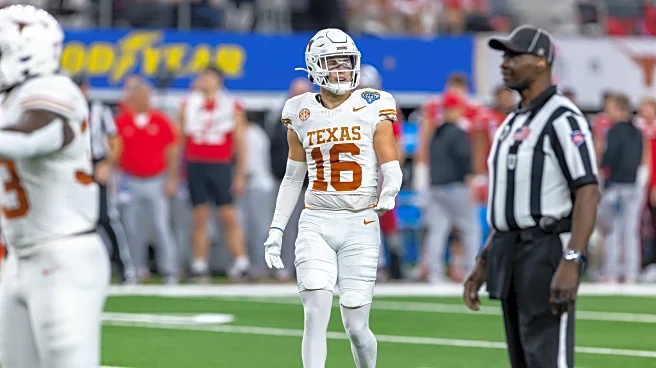What's Happening?
YouTube TV and Fox have successfully negotiated a last-minute agreement to keep Fox channels available on the streaming platform, avoiding a potential blackout that could have affected millions of viewers. The deal was finalized just before the deadline, ensuring that channels such as Fox Broadcast Network, Fox Sports, FS1, Fox Business, and Fox News remain accessible to YouTube TV subscribers. This agreement comes at a crucial time as the college football and NFL seasons are beginning, with high-profile events like the Texas vs. Ohio State game and the first week of NFL action drawing significant viewership. The negotiations were tense, with YouTube TV arguing that Fox's proposed carriage fees were above market norms, while Fox defended the value of its programming. FCC Chair Brendan Carr had publicly urged Google, YouTube TV's parent company, to reach a deal for the benefit of sports fans.
Why It's Important?
The agreement between YouTube TV and Fox is significant as it ensures uninterrupted access to popular sports and news programming for approximately 9.4 million subscribers. This resolution prevents potential disruptions during major sporting events, which are critical for both viewer satisfaction and advertising revenue. The deal highlights the ongoing challenges in the streaming industry regarding carriage fees and content valuation. By maintaining access to Fox channels, YouTube TV can continue to offer a competitive package to its subscribers, preserving its market position against other streaming services. The resolution also reflects the importance of sports programming in driving subscriber engagement and retention.
What's Next?
With the agreement in place, YouTube TV subscribers can expect continued access to Fox's programming without any immediate changes to their service. However, the broader implications of this negotiation may influence future carriage fee discussions between streaming platforms and content providers. As streaming services continue to grow, similar disputes may arise, prompting regulatory attention and potential intervention. Stakeholders in the industry will likely monitor these developments closely, considering the balance between content costs and subscriber satisfaction.












